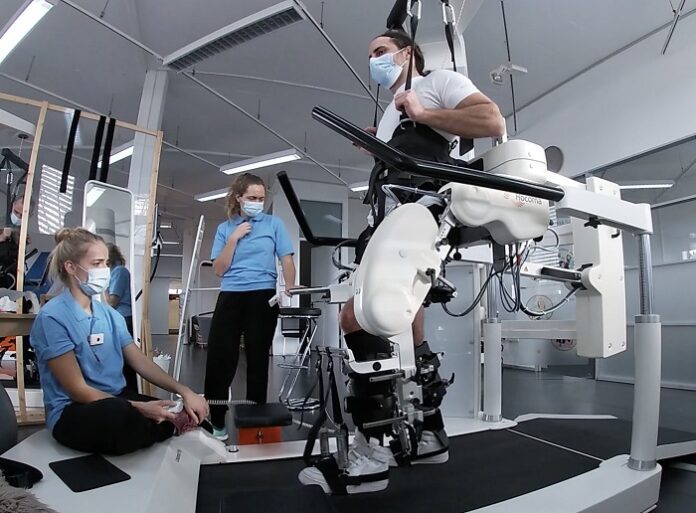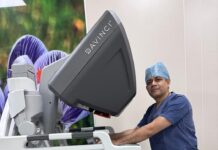

Spinal cord injuries drastically alter lives, often causing severe mobility impairments. Rehabilitation robotics—devices that assist movement during therapy—have helped individuals regain function. However, their effectiveness is limited because passive robotic assistance alone does not actively engage muscles or sufficiently retrain the nervous system.
A Breakthrough in Rehabilitation Technology
Researchers at NeuroRestore, led by Grégoire Courtine and Jocelyne Bloch, have developed an innovative system that integrates an implanted spinal cord neuroprosthesis with rehabilitation robotics. This new approach synchronizes well-timed electrical stimulation with robotic movements, ensuring natural and coordinated muscle activation during therapy. Their groundbreaking work has been published in Science Robotics.
Combining Neuroprosthetics and Robotics
As reported by medicalxpress, the team collaborated with Professor Auke Ijspeert’s lab at EPFL, combining neuroprosthetics with robotic rehabilitation to enhance mobility and promote long-term recovery. Unlike traditional methods, this system activates motor neurons more effectively by mimicking natural nerve signals through biomimetic electrical epidural stimulation.
Seamless Synchronization for Effective Therapy
For this technology to work, spinal cord stimulation must be precisely timed to match a patient’s movement. Researchers integrated electrical epidural stimulation with robotic rehabilitation devices such as treadmills, exoskeletons, and stationary bikes. Wireless sensors detect limb motion in real-time, automatically adjusting stimulation for a seamless user experience.
Proof-of-Concept Study Shows Promising Results
In a study involving five individuals with spinal cord injuries, the combination of robotics and electrical epidural stimulation immediately and sustainably activated muscles. Participants not only regained the ability to engage muscles during robotic-assisted therapy but also improved their voluntary movements even after stimulation was turned off.
Real-World Impact and Integration into Rehabilitation Centers
Researchers tested this technology in multiple rehabilitation centers to ensure compatibility with widely used robotic devices. NeuroRestore researchers Nicolas Hankov and Miroslav Caban, the study’s first authors, observed significant enthusiasm from rehabilitation professionals.
“Seeing firsthand how seamlessly our approach integrates with existing rehabilitation protocols reinforces its potential to transform care for people with spinal cord injuries,” they noted. The system also demonstrated success beyond clinical settings, enabling participants to walk with a rollator and cycle outdoors.
A Game-Changer for Mobility Restoration
This innovation provides new hope for individuals with spinal cord injuries by making rehabilitation more dynamic and engaging. By integrating neuroprosthetics with robotic therapy, it offers a more effective approach than robotics alone.
Looking Ahead: Future Clinical Trials
Future clinical trials will determine the long-term benefits of this technology. However, initial results suggest it could redefine mobility restoration after paralysis, making advanced rehabilitation accessible to more individuals worldwide.






















